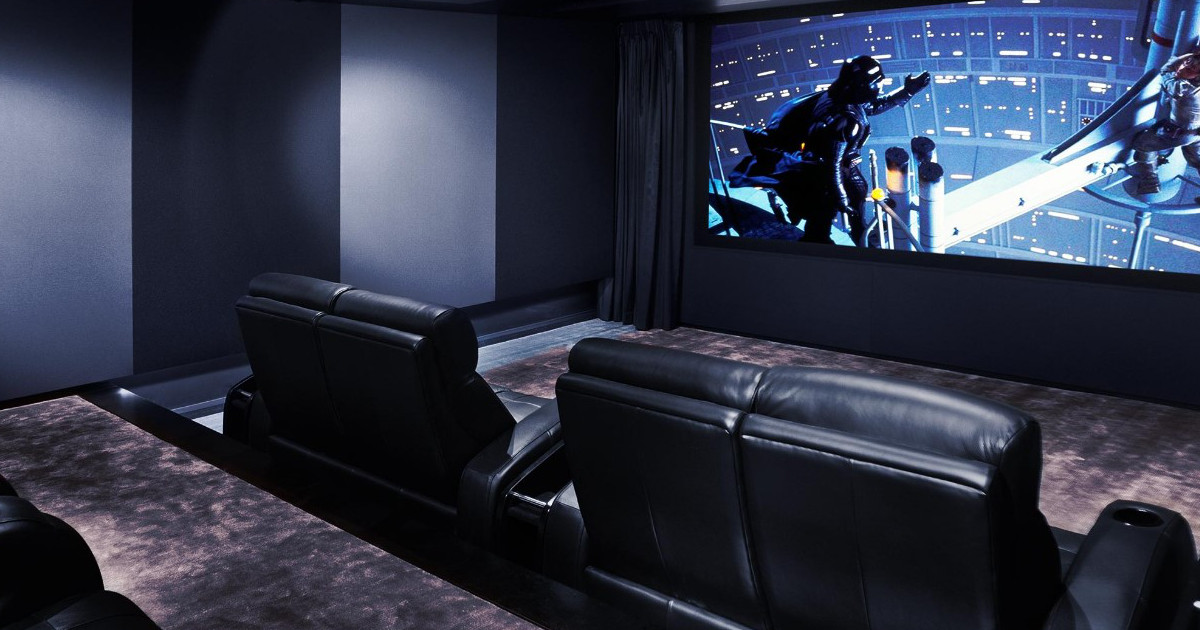D-Box is a motion immersion technology installed in select AMC Theatres and is meant to further blur the line between the audience and the screen.
No, this isn’t anything like Star Tours in Disney World or the Back to the Future ride in Universal Studios, but it aims to add an extra dimension of physicality to the movie-watching experience.
Adding new sources of sensory input to the cinema continues to be experimented on in an attempt to combat the on-demand, home theater market which threatens the general cinema’s very existence every day.
Finding new ways to justify high ticket prices by providing more premium services regular households simply don’t have access to is the only way to survive.
Ever eager to try something new with one of my favorite forms of entertainment, I put up the extra cash for a D-Box ticket, and this is what I discovered.
Screening rooms outfitted with D-Box look virtually identical to your typical cinema space, but with a few rows of special chairs reserved in the center of the room set up like a series of singular platforms.
These chairs are rigged to shake, rattle, pitch, and tilt along with the action that plays out onscreen. To accommodate for this motion, extra spacing between individual chairs is required so no couple’s hand holding or cuddling is possible with D-Box.
Seats are outfitted with standard cup holders, no leg rests and no seatbelts as the chairs’ most violent moves are incapable of ejecting an adult.
Please note that children under the age of 10, weighing in at under 45 pounds, pregnant women, and elderly people with heart, neck, back or head conditions are not recommended to use these chairs.
Be forewarned as there is no oversight or safety protocol assigned to D-Box in theaters so they are to be used at your own risk.
D-Box Technologies Inc. or the actual theater you are currently in are somehow not responsible for “any damages of any kind arising from the use of the D-BOX Motion System” without any warning notifications posted anywhere in the theater I attended (AMC 18 Pompano Beach) or the signing of any waiver to the same effect when purchasing tickets online and getting them printed out at the box office.

D-Box experience is a mixed bag of mildly distracting and outright annoying
If you are comfortable with all of the above (along with the $18.99 price point for a non 3D or IMAX screen) the experience itself is a mixed bag of mildly distracting and outright annoying.
I am a big fan of theme park motion rides like the ones I mentioned in the beginning because the physicality is intuitively synced with the movement onscreen, thus producing a very effective illusion.
D-Box, on the other hand, is not nearly as sophisticated because any properly synced chair to screen movement is fleeting, coincidental, and random.
Big explosions give the chair a sustained shake overall, punches and single-shot gunfire produce short bursts of shakes while camera movement to the left or right do not always tilt you in that direction, and sometimes, you just tilt for no reason.
The one good thing here is that the user has an element of control for this crazy chair in the form of raising or lowering (down to zero) the intensity of chair movement.
At first, I didn’t quite understand the purpose for nullifying the very effect I paid a premium price for in the first place, but I learned quickly how invaluable the off switch was.
The jarring, nonsensical movement became too much of a distraction during several moments of the film to the point where I got angry at the chair for reminding me how separated I was from the story I was trying to get into.
The film I went to see with D-Box technology was Deadpool 2, thus there were plenty of opportunities for the chair to show off its capabilities what with all the inherent action onscreen.
As much as I enjoyed the film and was amused by the chair’s movement, ultimately, I was dissatisfied with the experience because of the lack of synergy between the visual and the physical.
The current quality of D-Box technology in general cinemas has about the same precision as duct-taping 50 PS4 rumble controllers to your body and having one of your kids push you on a rocking chair.
It sounds fun enough when your attention really isn’t required, but watching a movie demands a wee bit of attention. Until this tech gets specialized coding for each movie it is assigned to more properly reflect visual movement onscreen, D-Box is D-List and to be avoided altogether.







